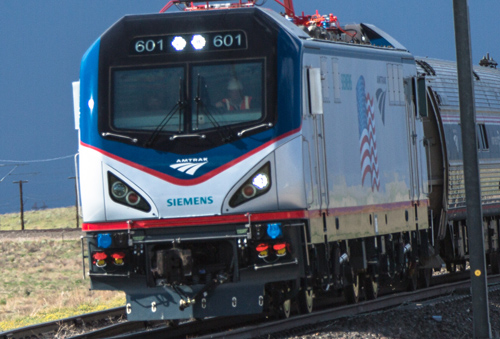Outdoors: Buses and rails make for good traveling options
Winter travel is indeed tricky for the outdoors person, especially if you’ve set up an extensive trip. Headed for the islands to do some tropical fishing? Headed for the Rockies for the ski trip of your dreams? There may be serious issues getting from here to there.
One recent day, for example, the travel reports for local roadways and airports were dire. By noon 1,300 flights were canceled or delayed, according to NPR.
Thanks to the “hub” system that often puts all air travel eggs in a few baskets, it’s not unusual to see travelers frustrated in one location by events 500 miles away. We attended a conference in Washington, D.C. (Appropriately enough, it was a conference on climate change!) two weeks ago where at least one keynote speaker had to cancel because of an “event” (a freeze in an unprepared city, Atlanta) far away from the conference site.
For travelers who have more time for their trips and for those who have grown frustrated by the frisk and search manners of “homeland insecurity” or the random intensive searches of professionals and seniors or the endless queues in an airport at 4 a.m., long-distance travel by rail or by bus is a reasonable alternative. Over the past decade, we’ve logged many hours going by bus or rail up and down the East Coast and by rail across the country to Oregon. Although we put up with some inconveniences, we find these trips to be pleasant overall and certainly worth their dollar values.
Rail is my first choice where schedules permit. Probably the biggest headache comes from the national model whereby Amtrak rails are owned by private carriers like, say, Canadian National. In an antiquated system with lots of single track, punctuated by intermittent sidings, passenger trains are often forced to follow slow freights until they get to a siding. Wise rail travelers realize there are two systems of timekeeping, Standard Time (or Daylight Savings) or Amtrak time. You always build a cushion of roughly one hour per 300 miles when making plans and keep your cellphone available to make adjustments. During extreme weather in which planes are grounded and roads are closed, the rails tend to get through, largely because long-distance rail makes use of diesel. However, during big storms, riders have to put away their clocks, be happy that they’re warm and well fed (thanks to café cars or dining cars) and pack plenty of reading materials. On scenic lines like the Empire Builder (Chicago to Portland/Seattle) or the Lake Shore Limited (Chicago to New York) it’s not unheard of to be three to seven hours late because of weather. One good thing, however: If you’ve got a connecting train, that’s usually held for delayed passengers.
In much of the country, the Greyhound and Trailways bus systems (which complement many inter-city lines) patch into the national network in convenient ways. Often the buses run more frequently than trains, too.
There are some glitches trying to mesh bus with rail. For example, Greyhound down to New York City from Montreal-Albany (which we use a lot) has an evening coach that leaves travelers at the Port Authority at about 1:30 a.m., just in time to get to Penn Station after the LIRR and NJ Transit are shutting down for a couple of hours. No restaurants, no restrooms, no waiting rooms — just sit on the floor until the first trains roll out about 3:15 a.m.
If you use long-distance buses, you should travel with packs that easily stow in overhead racks, if possible. It’s easy to lose items stored underneath at transfer points. We once lost a cooler full of iced flounder from the East End for nearly a week in Albany when it was stored underneath a New York-to-Montreal bus. Phew!
The cross-country trains, like the airlines, take the biggest suitcases, and their baggage-car system seems to work pretty well.
For those brutalized by airline seating, situations where the recliner in front of you descends into your lap or where anything you drop can never be recovered or where you’re constantly bumping butts with a seatmate, rail seating is a revelation. Even wide folks and leggy folks have enough room on the rail.
Buses are sort of “in between” as far as room goes, and there’s one toilet per 50-odd passengers, but still not bad. Slender folks learn to take outside seats to avoid a last-minute boarder sized like a defensive tackle. Earplugs, pillows, and caps that pull over the eyes work for sleeping when seats recline. Thanks to hand-helds, animated cellphone conversations are much less frequent than they used to be.
If you can, try a train or bus trip to an outdoor destination for a change. You might be pleasantly surprised.









